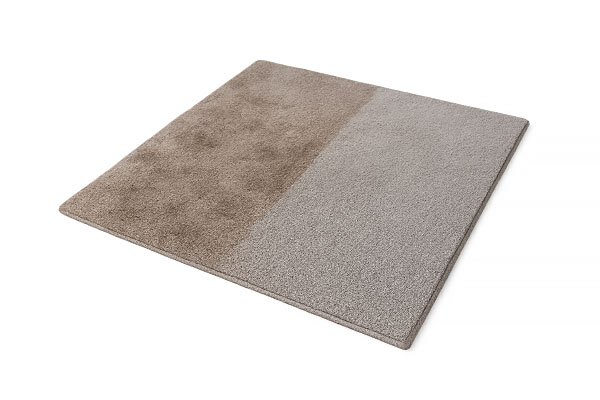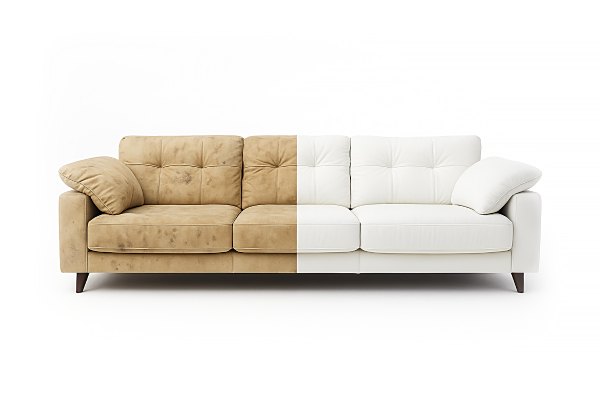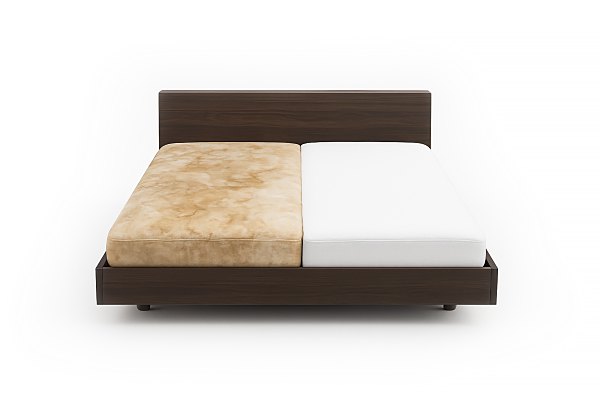Ice cream spills and dessert accidents on mattresses create more than just unsightly marks. These sugary substances penetrate deep into mattress fibres, creating sticky residues that attract dirt and bacteria. The combination of dairy proteins, artificial colours, and sugar compounds makes these stains particularly challenging to address.
Sweet treats contain various components that react differently with mattress materials. Chocolate leaves oily residues, whilst fruit-based desserts introduce acidic compounds that can permanently discolour fabric. Acting quickly becomes essential because these substances bond with mattress fibres as they dry. Understanding the complexity of dessert stains helps homeowners approach cleaning with appropriate techniques and realistic expectations.
Ice cream and dessert stains require immediate action for best results
Time sensitivity defines the success rate for dessert stain removal. Fresh spills respond dramatically better to cleaning efforts than set-in marks that have undergone chemical changes within mattress materials.
Why speed matters for dessert cleanup
Dessert ingredients undergo rapid transformation once they contact mattress surfaces. Sugar crystallises and hardens within minutes, creating stubborn deposits that resist standard cleaning methods. Dairy components in ice cream begin to sour quickly, developing unpleasant odours that become difficult to eliminate completely.
The protein structures in milk-based desserts coagulate when exposed to air and warmth. This process creates stronger bonds with fabric fibres, making removal exponentially more difficult after the first hour. Temperature changes accelerate these chemical reactions, particularly in warm bedroom environments.
Critical first steps for fresh spills
Immediate response involves careful removal of excess dessert material without spreading the stain further. Using a clean spoon or blunt knife, gently scrape away solid components, working from the outside edge toward the centre. This technique prevents the stain from expanding across a larger area.
Blotting with clean, dry cloths absorbs liquid components before they penetrate deeper into mattress layers. Pressing firmly without rubbing helps lift moisture whilst avoiding further embedding of stain particles. Multiple clean cloths may be necessary to achieve maximum absorption during this crucial phase.
Essential immediate actions:
- Remove solid debris with gentle scraping motions
- Blot liquid components using clean, absorbent materials
- Work from stain edges toward the centre
- Avoid rubbing or aggressive wiping movements
- Change cloths frequently to prevent spreading
Time limitations affect cleaning success rates significantly. Stains addressed within the first 10-15 minutes show removal rates exceeding 90% with proper techniques. This window decreases to approximately 60% success after one hour, highlighting the importance of rapid response to dessert accidents.
Different dessert types need specific cleaning approaches
Various dessert categories present unique cleaning challenges based on their ingredient compositions and physical properties. Understanding these differences enables targeted treatment strategies that address specific stain characteristics effectively.
Dairy-based dessert challenges
Ice cream contains complex combinations of milk proteins, fats, and sugars that require multi-step cleaning approaches. The fat content creates water-resistant barriers that repel standard cleaning solutions. Protein components bind with fabric fibres through chemical processes that strengthen over time.
Frozen desserts present additional complications due to temperature variations during cleanup. As ice cream melts, it releases concentrated sugar solutions that penetrate deeply into mattress materials. The transition from solid to liquid state increases the stain’s surface area and absorption potential.
Chocolate and cocoa complications
Chocolate-based desserts introduce oil-soluble stains that resist water-based cleaning methods. Cocoa butter and added fats create persistent marks that require specific solvents for effective removal. Dark chocolates contain tannins that can permanently discolour light-coloured mattress fabrics.
The combination of fats and sugars in chocolate creates layered stains with different removal requirements. Surface oils must be addressed before underlying sugar residues can be properly treated. This sequential approach prevents ineffective cleaning attempts that may actually set the stain permanently.
Fruit-based dessert considerations
Berry desserts and fruit toppings contain natural acids and pigments that present unique removal challenges. Anthocyanins in berries create vibrant stains that can become permanent if treated incorrectly. The acidic nature of many fruits can actually assist in some cleaning processes whilst complicating others.
Dessert-specific cleaning requirements:
- Ice cream: Address fats first, then sugars and proteins
- Chocolate: Use oil-dissolving agents before water-based solutions
- Berry desserts: Neutralise acids whilst preserving colour-lifting potential
- Custard-based: Target egg proteins with enzyme-based cleaners
Pro tip: Test cleaning solutions on inconspicuous mattress areas before treating visible stains to prevent unexpected discolouration or fabric damage.
Essential household items that tackle sweet stains effectively
Common household products provide effective stain removal capabilities when used correctly. Understanding which items work best for specific dessert components helps create targeted cleaning solutions from readily available materials.
Basic cleaning arsenal
Cold water serves as the foundation for most dessert stain removal processes. Room temperature or slightly cool water prevents protein coagulation whilst providing adequate dissolution power for sugar components. Hot water should be avoided as it can set protein stains permanently into mattress fibres.
White vinegar offers mild acidity that helps break down sugar residues whilst providing gentle bleaching action for colour removal. The acetic acid content neutralises alkaline dessert components whilst creating an environment that discourages bacterial growth. Vinegar solutions should be diluted to prevent fabric damage from excessive acidity.
Specialised household solutions
Liquid laundry detergent contains enzymes specifically designed to break down protein and fat components found in dessert stains. These biological agents target the molecular structures that bind stains to fabric fibres. Enzyme-based detergents work particularly well on dairy-based dessert spills.
Baking soda provides alkaline cleaning action that complements acidic treatments. Its absorbent properties help lift moisture and odours from mattress materials. The mild abrasive action assists in breaking up crystallised sugar deposits without damaging delicate mattress fabrics.
Essential cleaning supplies:
- Cold water for initial dilution
- White vinegar for acid-based treatment
- Liquid laundry detergent for enzyme action
- Baking soda for absorption and odour control
- Clean white cloths for blotting and application
Hydrogen peroxide serves as a mild bleaching agent for colour stains whilst providing antimicrobial benefits. However, it should be tested carefully as it can lighten mattress fabrics. Dawn dish soap excels at breaking down fatty components in ice cream and chocolate desserts through its grease-cutting formulation.
Club soda provides carbonation that helps lift stains whilst delivering mild cleaning action. The sodium content assists in breaking down protein structures, making it particularly effective for dairy-based dessert accidents. Its neutral pH makes it safe for most mattress materials whilst providing gentle cleaning action.
Step-by-step cleaning process for fresh dessert spills
Systematic cleaning approaches maximise stain removal success whilst minimising mattress damage. Following proper sequences ensures each treatment step builds upon previous efforts rather than counteracting them.
Initial assessment and preparation
Begin by evaluating the stain’s extent and identifying the dessert type involved. This assessment determines which cleaning agents will be most effective and helps establish realistic expectations for removal success. Consider the mattress material and any manufacturer cleaning recommendations.
Remove all bedding and mattress protectors to prevent secondary staining during the cleaning process. Strip the area completely to provide unrestricted access to the affected region. Position absorbent towels around the stain perimeter to catch any cleaning solution runoff.
Primary treatment sequence
Start with cold water application using a spray bottle to lightly dampen the stained area. Avoid oversaturation, which can spread the stain or create moisture problems within the mattress core. Work the water gently into the stain using light dabbing motions with clean cloths.
Apply enzyme-based laundry detergent directly to the dampened stain area. Allow the enzymes to work for 5-10 minutes, breaking down protein and fat components. The biological action requires time to effectively target molecular bonds holding the stain to fabric fibres.
Create a vinegar solution using one part white vinegar to three parts cold water. Apply this mixture using a spray bottle, covering the entire stained area evenly. The mild acid helps dissolve sugar residues whilst providing additional cleaning action against protein components.
Step-by-step cleaning protocol:
- Assess stain type and mattress material compatibility
- Remove bedding and prepare work area with protective towels
- Apply cold water lightly to dampen stained region
- Treat with enzyme laundry detergent for 5-10 minutes
- Apply diluted vinegar solution evenly across stain
- Blot thoroughly with clean, dry cloths
- Rinse with minimal cold water application
- Final blotting to remove excess moisture
Final treatment and drying
Blot the treated area thoroughly using clean, dry cloths to remove cleaning solutions and loosened stain particles. Change cloths frequently to prevent redistribution of removed contaminants. Apply firm pressure without rubbing to maximise absorption.
Sprinkle baking soda over the cleaned area to absorb remaining moisture and neutralise any lingering odours. Allow the baking soda to remain for several hours or overnight before vacuuming thoroughly. This final step helps ensure complete moisture removal and odour elimination.
Pro tip: Use a fan or dehumidifier to accelerate drying time and prevent mould development in the cleaned mattress area, particularly important in humid climates or poorly ventilated bedrooms.
Advanced techniques for stubborn or set-in dessert stains
Established stains require more aggressive treatment approaches that target chemically bonded contaminants. These methods address the structural changes that occur when dessert components have had time to cure within mattress materials.
Enzyme enhancement methods
Commercial enzyme cleaners designed for protein stains provide concentrated biological action against set-in dessert marks. These products contain multiple enzyme types that target different molecular structures simultaneously. Apply these cleaners generously and allow extended contact time for maximum effectiveness.
Creating enzyme paste using powdered enzyme cleaner and minimal water increases contact time and cleaning concentration. This thick mixture adheres to stain surfaces longer than liquid applications, providing sustained biological action. Cover the paste with plastic wrap to prevent drying and maintain enzyme activity.
Heat activation techniques
Controlled heat application can reactivate dried dessert components, making them more susceptible to cleaning agents. Use a hair dryer on low heat to warm the stained area slightly before applying cleaning solutions. Avoid excessive heat that could damage mattress materials or set protein stains permanently.
Steam treatment using a garment steamer provides moisture and heat simultaneously, helping to soften crystallised sugar deposits and coagulated proteins. Apply steam indirectly to prevent over-saturation whilst creating optimal conditions for cleaning agent penetration.
| Treatment Method | Contact Time | Success Rate | Risk Level |
|---|---|---|---|
| Standard enzyme cleaner | 15-30 minutes | 70-80% | Low |
| Enzyme paste application | 2-4 hours | 85-95% | Low |
| Heat-activated treatment | 45-60 minutes | 80-90% | Medium |
| Professional steam cleaning | 1-2 hours | 95-99% | Low |
Advanced cleaning strategies:
- Multiple treatment cycles for resistant stains
- Combination approaches using different cleaning agents sequentially
- Professional-grade enzyme formulations for severe cases
- Steam treatment followed by intensive extraction methods
Pro tip: For extremely stubborn stains, consider professional mattress cleaning services that have access to commercial-grade equipment and specialised cleaning formulations not available to consumers.
Professional mattress cleaning services in Sydney provided by SevenClean
SevenClean stands as Sydney’s trusted cleaning specialist, delivering expert services for carpets, rugs, furniture upholstery, and mattresses. The company specialises in professional, safe, and thorough cleaning services that eliminate dust mites, stains, and odours for a fresher, healthier night’s sleep.
Comprehensive mattress cleaning solutions
SevenClean’s mattress cleaning service targets multiple contaminants that accumulate in bedding over time. Their professional-grade equipment removes dust mites, allergens, and bacteria whilst eliminating persistent odours and stains. The service proves particularly valuable for dessert stains that have proven resistant to household cleaning attempts.
The company’s approach focuses on deep cleaning that reaches beyond surface treatments. Their specialised techniques address embedded contaminants that standard home cleaning methods cannot effectively remove. This comprehensive service helps restore mattresses to optimal cleanliness and hygiene standards.
Additional SevenClean services
Beyond mattress cleaning, SevenClean provides extensive upholstery cleaning services for furniture throughout the home. Their furniture cleaning expertise extends to various fabric types and stain categories, making them well-equipped to handle dessert-related accidents on sofas, chairs, and other upholstered items.
The company also offers professional carpet and rug cleaning services, providing comprehensive home cleaning solutions. This multi-service approach allows customers to address dessert stains and other cleaning challenges throughout their living spaces with a single trusted provider.
SevenClean service range:
- Professional mattress deep cleaning and sanitisation
- Furniture upholstery cleaning for all fabric types
- Carpet and rug cleaning with stain removal expertise
- Dust mite elimination and allergen reduction treatments
- Odour removal and fabric protection services
SevenClean services
Prevention strategies and tips for protecting your mattress
Proactive measures significantly reduce the likelihood and severity of dessert stains whilst extending mattress lifespan. These protective strategies create barriers against accidents whilst maintaining sleeping comfort and mattress functionality.
Physical barrier protection
Waterproof mattress protectors provide the first line of defence against liquid spills and stains. Modern protectors use breathable materials that maintain sleeping comfort whilst creating impermeable barriers against moisture penetration. These protectors allow easy removal and washing when accidents occur.
Fitted mattress covers with stain-resistant treatments add an extra protective layer without compromising comfort. These covers integrate protective technologies that repel liquids whilst maintaining fabric breathability. Regular washing of these covers helps maintain their protective properties and ensures continued effectiveness.
Behavioural modifications
Establishing eating restrictions in bedroom areas eliminates most dessert accident risks. Designating specific areas for consuming sweet treats reduces the likelihood of spills reaching mattress surfaces. This simple policy change provides the most effective protection against food-related stains.
When bedroom eating cannot be avoided, using bed trays or stable surfaces creates controlled environments that contain potential spills. These platforms provide stable bases for desserts whilst protecting mattress surfaces from direct contact. Selecting trays with raised edges adds additional spill containment.
Environmental controls
Maintaining optimal bedroom humidity levels helps prevent existing stains from developing mould or bacterial growth. Humidity levels between 40-50% discourage microbial development whilst maintaining comfort. Dehumidifiers or ventilation improvements help achieve these optimal conditions.
Temperature control affects both stain development and cleaning success rates. Cooler temperatures slow bacterial growth whilst preventing accelerated chemical bonding of stain components. Adequate ventilation helps maintain these optimal environmental conditions naturally.
Mattress protection strategies:
- Waterproof protectors with breathable technology
- Regular rotation to distribute wear evenly
- Professional cleaning every 6-12 months
- Immediate spill response protocols
- Environmental humidity and temperature control
Pro tip: Invest in multiple mattress protectors to ensure continuous protection during washing cycles, particularly important for households with young children or frequent bedroom eating habits.
Summary
Removing ice cream and dessert stains from mattresses requires immediate action and appropriate techniques tailored to specific stain types. Success depends heavily on rapid response, with treatment within the first 15 minutes showing removal rates exceeding 90%. Different dessert components require targeted approaches – addressing fats before sugars in ice cream, using oil-dissolving agents for chocolate, and managing acids in fruit-based desserts.
Household items like cold water, white vinegar, enzyme detergents, and baking soda provide effective cleaning solutions when applied systematically. Advanced techniques including enzyme enhancement and controlled heat application help address stubborn, set-in stains that resist standard treatment methods.
Prevention remains the most effective strategy, utilising waterproof mattress protectors, establishing eating boundaries, and maintaining optimal environmental conditions. Professional services like SevenClean offer comprehensive solutions when household methods prove insufficient, ensuring mattress longevity and hygiene standards are maintained.





